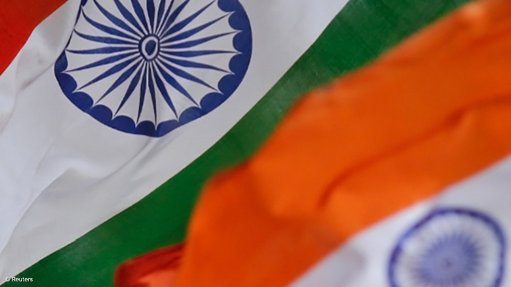
Photo by: Reuters
KOLKATA (miningweekly.com) - The Indian government has approved a sharp increase in royalty rates for 55 notified minerals, which was expected to yield $1.98-billion in revenue to the provincial governments where mining operations were conducted.
The Cabinet of Ministers, chaired by Prime Minister Narendra Modi, on Wednesday approved the increase in royalty rates, which had been hanging fire for the last two years.
Following the government decision, royalty on iron-ore would be up from 10% to 15%, phosphates from 11% to 12.5%, metallurgical bauxite from 0.5% to 0.6%, manganese from 4.2% to 5%, chromite from 10% to 15% and lead from 1.7% to 14%.
The revision of rates excluded coal, lignite and sand stowing, which would be considered separately after due process, an official in the Mines Ministry said.
The royalty rates for minerals, barring coal and lignite, were supposed to be revised every three years but the last revision was only effected in August 2009. The current rates were based on the recommendations of a panel set up by the previous Indian government.
The provincial governments of mineral-rich regions had been clamouring for an increase in the rates, claiming low rates were depriving the local governments of revenues at a time when the value of minerals had increased sharply since the last revision in 2009. The royalties are calculated on an ad valorem basis based on pit-head value determined monthly by the Indian Bureau of Mines.
Reacting sharply against the hike, the Federation of Indian Mineral Industries (FIMI) said that it would push up prices of metals and that the cost of securing raw material for domestic steel producers would increase at a time when they were facing a shortage of iron-ore from domestic mines and having to resort to imports.
Furthermore, FIMI pointed out that even steel producers with captive iron-ore would have to pay more to provincial governments, increasing the cost of production, which would have to be passed on to consumers, fuelling inflationary pressures.
The Associated Chamber of Commerce and Industry in a communication to the government had earlier pointed out that the Indian mining industry was among the most highly taxed in the world, which was a critical impediment to development of the sector.
It pointed out that Brazil, one of the largest iron-ore producers, and with steelmaking capacity similar to India, levied a royalty of 2%, while South Africa had a 3% levy, while Australia’s rates varied between 2.7% and 7.5%.